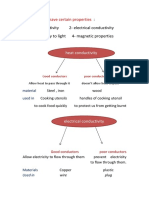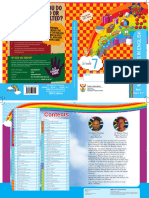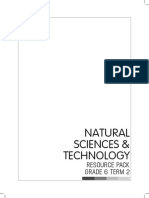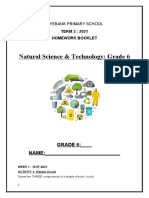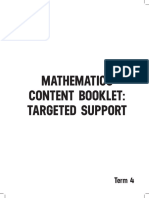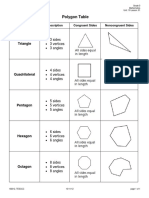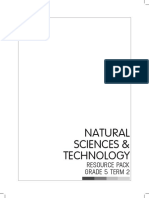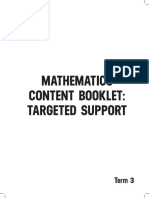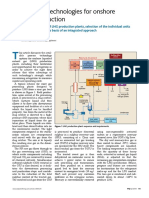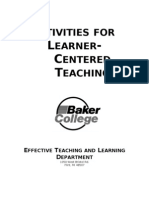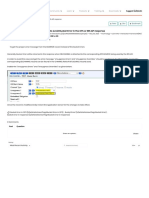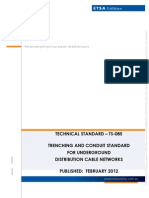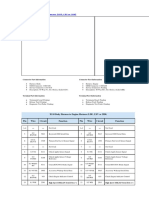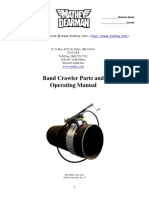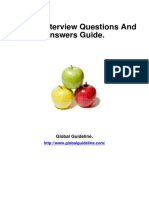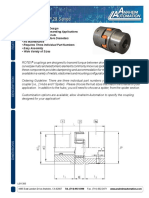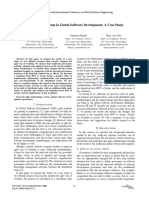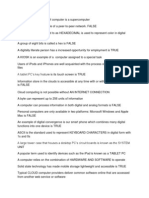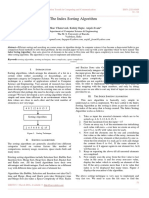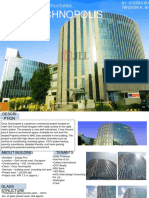MEDIA INFORMATION LITERACY
“TEXT AND VISUAL DIMENSIONS”
After going through this module, you are expected to:
1. Explain the principles in designing text and visual elements
2. Evaluate the impact of text and visual content and forms
3. Design a personal brand or logo using appropriate text and visuals
4. Spread positive and affirming information through visual media.
Text may be defined as a simple and flexible format of presenting information or
conveying ideas whether hand-written, printed or displayed on-screen. It is very
powerful in disseminating information, providing direction and giving suggestions.
Text is available in different sources, which may be categorized into two:
1. Formal Example of these are news articles, published books, newspapers, magazines,
advertisements, research works, etc. Formal text-based materials are created and
distributed by established institutions (such as publishing companies, news agencies,
etc.) and go through a rigorous process of editing or evaluation and are usually governed
by censorship of the state.
2. Informal Examples of these are blogs, personal e-mails, SMS or text messages, online
messengers, social media platforms, etc. They come from personal opinions or views on
different issues, processes, etc.
Text can be as short such as a single sentence or phrase, or they can be as lengthy as
news articles or investigative reporting. No matter how brief or lengthy, however, a text
is always carefully written with the intent of sending a very specific message to the target
audience.
As consumers of text media and information, we need to ask questions regarding the
text content to ensure its reliability:
Who or what institution is sending this message?
What techniques are used to attract and hold attention?
What is the language used by the writer?
What views are represented? Are they balanced?
How might the message be interpreted in different ways?
What is omitted (removed), slurred (unclear) or added in the message?
As producers of text media and information, we need to review the media and
information design framework:
target audience,
author or sender,
key content,
purpose,
form/style, and
format.
Text as Visual
Typeface font, font type, or type) is the representation or style of a text. A typeface is
usually composed of alphabets, numbers, punctuation marks, symbols and other
special characters. Fonts in digital format are installed in forms such as True Type Font
(.ttf), Open Type Font (.otf), etc. Fonts convey different emotions and meaning, and you
must be very careful in choosing the right font for your content. The table below presents
the different types of fonts, their implications, uses, and examples.
�Design Principles and Elements
The principles in designing text elements are emphasis, appropriateness, proximity, alignment,
organization, repetition and contrast. Observe how these elements are presented in each text frame.
���The primary purpose of visual information is to gain attention, create meaning, and facilitate
retention, but how can you create a striking visual? First, you must consider the visual elements,
or the basic units in the construction of a visual image. The Design Elements are: 1. Line
This describes a shape or outline. It can create texture and can be thick or thin. Lines may be actual,
implied, vertical, horizontal, diagonal, or contour.
� Take note that lines provide meaning also.
Horizontal lines are more static and calm; vertical
lines command attention and stability; diagonal lines
may convey movement; and contoured lines may
evoke turbulence, playfulness, and the likes.
2. Shape
A geometric area that stands out from the space next to or around it, or because of differences in
value, color, or texture. Shape may also be organic
Three implied geometric shapes can Organic shapes, like the eggplant
be found in the picture above: pictured above, are irregular and
diamond, octagon and triangle. asymmetrical in appearance and
tends to have curves, as in the case of
shapes found in nature.
3. Value
The degree of light and dark in a design. It is the contrast between black and white and all the tones
in between. Value can be used with color as well as black and white. Contrast is the extreme
changes between values.
�4. Texture
The way a surface feels or is perceived to feel. Texture can be added to attract or repel interest to
a visual element. Two contrasting visual textures are presented in this picture taken in Bolinao,
Pangasinan: the smoothness of the sea and the roughness of the contorted branches.
5. Color
Determined by its hue (name of color), intensity (purity of the hue), and value (lightness or darkness of
hue). Color and color combination can play a large role in the design. Color may be used for emphasis, or
may elicit emotions from viewers. Color may be warm, cool, or neutral. It plays a major role in our visual
perception, as it influences our reactions about the world around us. It is therefore important to create
color palettes that evoke the appropriate audience reactions.
���5. Directional Movement – a visual flow through the composition. It can be the suggestion of
motion in a design as you move from object to object by way of placement and position.
Directional movement can be created with a value pattern.
�������� GROUP ACTIVITY: 150 points (Short Film Poster)
You have to look for a local literary piece, example: Poem, Spoken Word Poetry, Short Story then
make a cover/poster based on the concept of the chosen literary piece. The poster/cover should be
in line with your final output which is a SHORT FILM. A table shown above will served as your
rubrics. 15 points is equivalent for 150 points.
1. Create a simple poster with the right visual and text components.
2. To ensure originality, include visuals related to your literary.
3. Avoid outrageous pictures or you might become an instant funny meme.
4. Incorporate an encouraging, catchy “lines” taken from the chosen literary piece in
your poster. You may use either English or Filipino, and make sure you follow the rules
of grammar and writing.
5. Submit it on March 25, 2023, on or before 12:00am. You may send your poster
through this email: picadexterjay@gmail.com . Then inform your teacher that you had
already submitted the said poster through email.
6. All entries of each blocks under my subject, will be showcase through google form.
The respondents of this are the Grade 11 students of ACLC College of Tacloban, they
will be the one to select or choose among the entries as to what BLOCK will receive the
special awards/points, like STUDENT’s CHOICE, BEST VISUAL, BEST CONCEPT. BEST
POSTER will be based in the rubrics shown above.
7. All participating blocks will receive 50 merit points.
8. Announcement will be on March 29, 2023 at exactly 5:00pm and will be uploaded in
the MIL Group chat.
� INDIVIDUAL ACTIVITY #2: 150 points (Type of Shots)
Theme: “Capture Moments, Slay like a Pro”
Instruction: You have to take or make a shots in all the type of shots written in this handout. It
should be you, on the frame as much as possible. Type of Shots are follows:
1. Extreme Wide/Long Shot
2. Wide/Long Shot
3. Full Shot
4. Medium Shot
5. Medium Close up
6. Close up
7. Extreme Close up
8. Birds Eye View
9. High Angle
10. Eye Level
11. Low Angle
12. Worms Eye View
13. Dutch Angle
You can use any digital, application, for enhancing your shots. You may also use whatever
software you wanted in showcasing your shots. It might be in a Microsoft Word, Publisher,
Photoshop, Canva as long as you’ll produce a hard copy of it. Outputs will be compiled and be
submitted as a group.
DEADLINE: Submission will vary according to your class schedule in Media Information
Literacy Subject. March 27-31, 2023.





